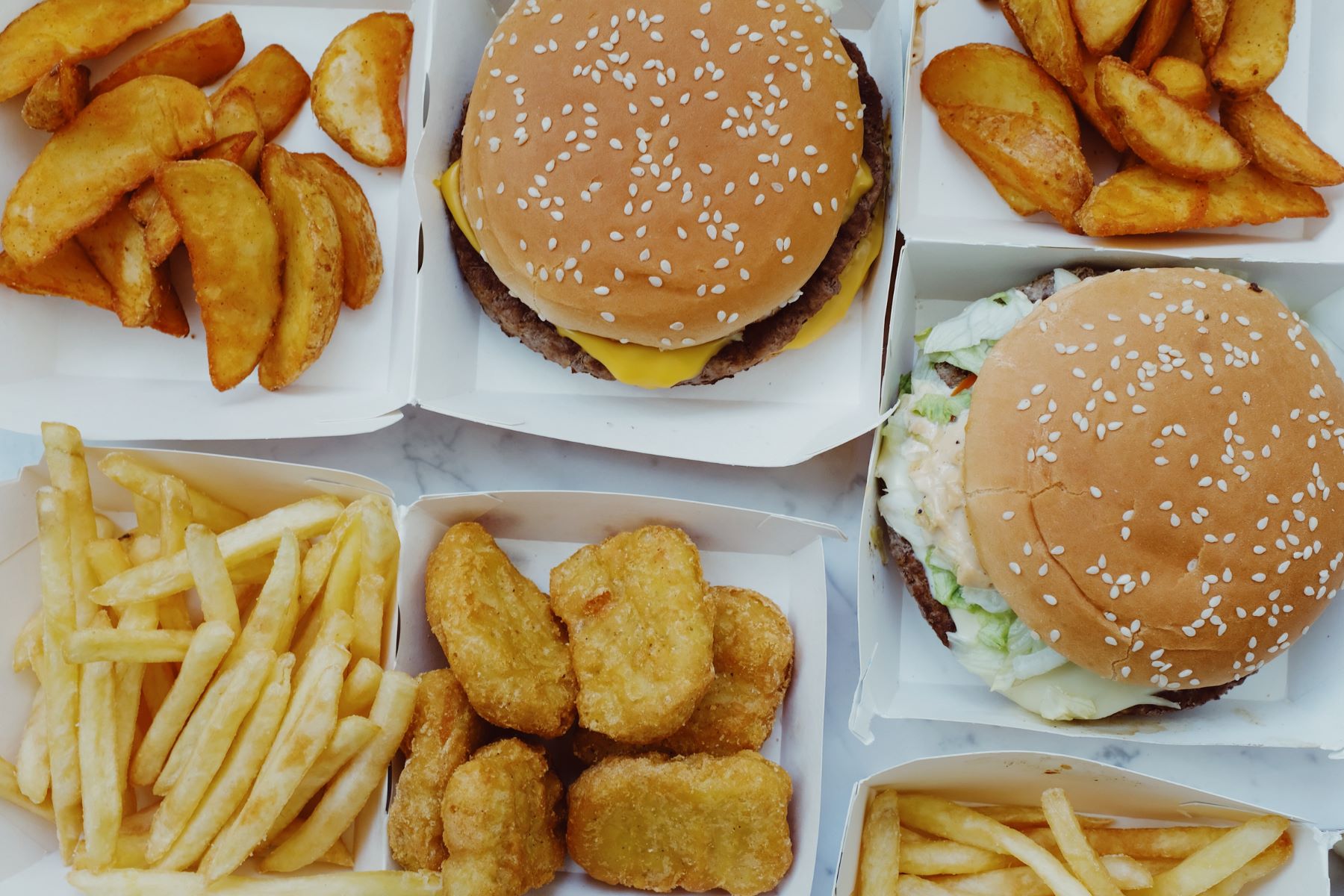
Fast food restaurants have become a staple in our daily lives, offering quick, affordable meals that fit into our busy schedules. Did you know that over 200,000 fast-food businesses operate in the United States alone? This massive presence highlights just how ingrained fast food is in our culture. From the iconic golden arches of McDonald's to the finger-lickin' goodness of KFC, these eateries have fascinating histories and quirky facts that might surprise you. Whether it's the bubble gum-flavored broccoli experiment or the fried rat hoax, there's always something intriguing behind the scenes. Let's dive into some lesser-known tidbits about your favorite fast food joints!
Fast Food's Ubiquity and Popularity
Fast food restaurants are everywhere, and their presence is a testament to their convenience and appeal. Let's dive into some fascinating facts about their prevalence and popularity.
-
Prevalence of Fast Food: Over 200,000 fast-food businesses operate in the United States as of 2023. This widespread presence shows how integral fast food has become in daily life.
-
Daily Consumption: Between 2013 and 2016, 36.6% of American adults consumed fast food on any given day. This statistic highlights how regularly people turn to fast food for meals.
-
Generational Differences: Millennials are the most frequent consumers, with 54% eating fast food a few times a week and 23% consuming it daily. Their busy lifestyles and preference for convenience drive this trend.
-
Gender Differences: Males are nearly three times more likely to eat fast food daily than females, with 20% of males reporting daily consumption compared to 7% of females. Men also prioritize food quality more than women, who value price and quality equally.
-
Income and Fast Food Consumption: Higher-income individuals consume fast food more frequently. The convenience and affordability appeal to those with busy schedules and limited time for meal prep.
Factors Influencing Fast Food Choices
What makes people choose one fast food restaurant over another? Several factors come into play, from food quality to location.
-
Quality and Price: The quality of food (68%) and price (62%) are the biggest factors influencing fast food choices. People want good food at a reasonable price.
-
Convenience and Variety: Convenience of location (57%) and menu variety (51%) also play significant roles. Fast food needs to be easy to get and offer a range of options.
-
Speed and Health: Speed of service (42%) and healthy options (34%) are important too. Quick service and healthier choices can sway decisions.
-
Brand Reputation: Brand reputation (33%) matters. People often stick to brands they trust and have had good experiences with.
-
Demographic Preferences: Gen Z and Gen X value price over quality more than other age groups. Economic factors and online discounts influence their choices.
Iconic Fast Food Chains and Their Quirks
Some fast food chains have become iconic, not just for their food but also for their unique stories and quirks.
-
McDonald's Dominance: Founded by Richard and Maurice McDonald in 1940, McDonald's is one of the most recognizable fast-food chains globally. Its golden arches are a symbol of fast food.
-
McDonald's French Fries: Nearly 1 in 4 Americans (24%) believe McDonald's has the best fast food french fries. Their fries are a major draw for customers.
-
Burger King vs. McDonald's: Millennials prefer Burger King fries over McDonald's. This preference shows how tastes can vary across generations.
-
KFC's Founder: Colonel Harland Sanders, the founder of KFC, was never an actual colonel. He was given the title by Kentucky's governor in 1935 for his contributions to the state's cuisine.
-
KFC's Fried Rat Hoax: One of the most infamous fast-food myths is that KFC served a fried rat. This hoax was debunked when tests confirmed it was chicken.
Strange and Surprising Fast Food Facts
Fast food restaurants have some strange and surprising stories that add to their intrigue.
-
Tim Hortons' Coffee Controversy: Tim Hortons faced rumors that its coffee contained nicotine, MSG, or high caffeine levels. Snopes debunked these claims.
-
Wendy's Finger Scandal: In 2005, a Wendy's customer claimed to find a human finger in her chili. It turned out to be a scam by the customer and her partner.
-
McDonald's Bubble Gum Broccoli: McDonald's once tried to market bubble gum-flavored broccoli to kids. The idea flopped and was discontinued.
-
Cinnabon's Aroma Strategy: Cinnabon places ovens near the storefront to fill the air with the smell of cinnamon rolls, attracting customers.
-
Arby's Name Origin: Arby's name comes from the initials of its founders, Leroy and Forrest Raffel.
Unique Practices and Menu Items
Fast food chains often have unique practices and menu items that set them apart.
-
Dunkin' Donuts' Coffee Policy: Dunkin' Donuts serves only freshly brewed coffee, discarding any that isn't sold within 18 minutes.
-
IHOP's Pancake Batter in Eggs: IHOP adds a small amount of pancake batter to its eggs when making omelettes, giving them a unique texture.
-
McDonald's Chicken McNuggets Composition: McDonald's Chicken McNuggets are made of 100% chicken breast meat but contain only about 45% chicken due to the batter, seasoning, and oil.
-
McDonald's McNugget Shapes: McDonald's Chicken McNuggets come in four shapes: the ball, the bell, the boot, and the bow tie.
-
Taco Bell's Seafood Salad: Taco Bell introduced a "seafood salad" in 1986, featuring shrimp, crab, and whitefish in a tortilla bowl.
Fast Food Innovations and Marketing
Fast food chains are known for their innovative marketing strategies and unique offerings.
-
Wendy's Frosty Composition: A Wendy's Frosty is a blend of chocolate and vanilla, designed to complement other menu items.
-
Carl's Jr.'s Mexican Sister Restaurant: Carl's Jr. had a Mexican sister restaurant called Taco de Carlos, which was eventually sold due to lack of success.
-
Chick-fil-A's Customer Rewards: Chick-fil-A rewards its first 100 customers with free meals for a year when a new restaurant opens.
-
Costco's Pizza Sales: Costco's food court sells enough pizza to rank among the top pizza chains in America.
-
McDonald's Sedona Location: A McDonald's in Sedona, Arizona, features a turquoise arch instead of the traditional yellow to blend with the desert's red rock surroundings.
Fast Food's Global Reach and Impact
Fast food chains have a global presence and impact, with some interesting stories from around the world.
-
Panda Express's Profitable Location: The most profitable Panda Express is in Hawaii, generating $4 million annually.
-
Panda Express's Hibachi San: Panda Express operates a Japanese spinoff restaurant called Hibachi San, specializing in sushi.
-
Jason Mraz and Chipotle Avocados: Jason Mraz supplies avocados to Chipotle. Each Chipotle restaurant uses over 44,000 pounds of avocado annually.
-
Taco Bell's Struggles in Mexico: Taco Bell struggled to gain a foothold in Mexico twice, in 1992 and 2007, due to higher prices and an inauthentic menu.
-
Red Lobster's Endless Crab Promotion: Red Lobster's "Endless Crab" promotion in 2003 resulted in a $3.3 million loss compared to the previous year's first-quarter profits.
Fun Facts and Trivia
Fast food restaurants have some fun and quirky facts that add to their charm.
-
Shake Shack's Name Origin: Shake Shack's name was inspired by an amusement park attraction featured in the "You're the One That I Want" dance scene from Grease.
-
The Cheesecake Factory's Menu: The Cheesecake Factory's menu contains approximately 250 items and around 6,000 words.
-
McDonald's Advertising: McDonald's paid Justin Timberlake $6 million to sing the "I'm Lovin' It" jingle.
-
Fast Food and Health: Fast food consumption is linked to weight gain, poor diet quality, and mortality. However, better nutrition labeling has led to healthier options.
-
Regional Offerings: Fast food chains often have regional offerings. For example, McDonald’s in Japan has unique items that cater to local tastes.
Fast Food's Impact on Modern Life
Fast food restaurants have woven themselves into the fabric of daily life. With over 200,000 fast-food joints in the U.S. alone, their convenience and affordability make them a go-to choice for many. From McDonald's iconic golden arches to KFC's Colonel Sanders, these brands have become household names. Millennials and Gen Z lead the charge in frequent consumption, valuing price and quality. Fast food's influence isn't just about quick meals; it's about shaping eating habits, marketing strategies, and even pop culture. Despite health concerns, the industry adapts with healthier options and innovative offerings. Whether it's McDonald's bubble gum broccoli experiment or Cinnabon's aroma strategy, fast food continues to evolve. Understanding these dynamics helps us make informed choices. Fast food's journey from humble beginnings to global dominance is a testament to its enduring appeal and adaptability.
Was this page helpful?
Our commitment to delivering trustworthy and engaging content is at the heart of what we do. Each fact on our site is contributed by real users like you, bringing a wealth of diverse insights and information. To ensure the highest standards of accuracy and reliability, our dedicated editors meticulously review each submission. This process guarantees that the facts we share are not only fascinating but also credible. Trust in our commitment to quality and authenticity as you explore and learn with us.


